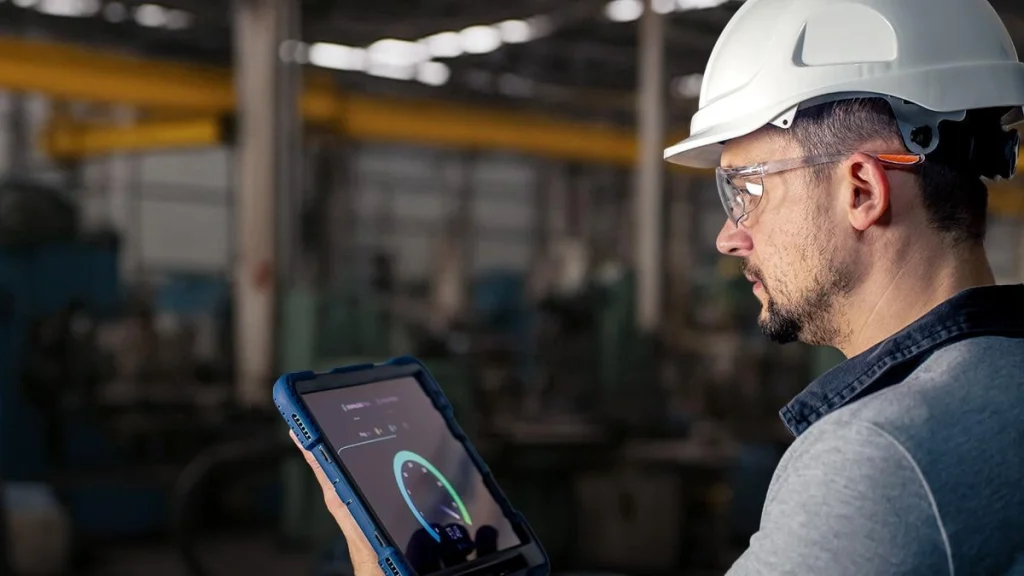Asset condition monitoring has transformed how businesses maintain their equipment and prevent costly breakdowns. Studies show that implementing predictive maintenance can reduce downtime by 35-50% and increase asset lifespan by 20-40%. We’ve seen firsthand how unplanned equipment failures lead to expensive repairs, productivity losses, and disrupted production schedules.
When organizations implement asset condition monitoring management, they can schedule maintenance before failures occur, essentially avoiding unplanned downtime. The benefits of asset management extend beyond just preventing breakdowns. With advanced condition monitoring software, companies can achieve a predictive accuracy of 90%. Furthermore, industries like aerospace and automotive that rely on complex equipment benefit significantly from early fault detection through asset condition monitoring software. The Plant Asset Management market is expected to gain substantial momentum through 2027, highlighting the growing recognition of its importance.
In this article, we’ll explore the top 10 benefits of asset condition monitoring that can help your organization maximize equipment reliability while minimizing costs and disruptions.
Improved equipment reliability
Reliability forms the cornerstone of effective asset management. Condition monitoring technologies have dramatically improved equipment reliability by providing early warnings of potential problems, allowing maintenance teams to intervene before catastrophic failures occur.
Reduced unplanned downtime
Unplanned equipment failures create devastating financial consequences for businesses worldwide. According to studies, 82% of companies have experienced at least one unplanned downtime incident in the past three years, with these disruptions costing an average of $250,000 per hour and $2 million per event.
Schedule maintenance before breakdowns
Asset condition monitoring enables maintenance teams to identify potential issues before they escalate into catastrophic failures. With real-time data from sensors and monitoring systems, organizations can detect early warning signs of equipment deterioration. Consequently, maintenance activities can be scheduled based on actual usage patterns rather than arbitrary fixed intervals.
Many organizations still rely on outdated, time-based maintenance strategies that fail to predict or prevent machine failures effectively. In contrast, asset condition monitoring software provides alerts when equipment begins showing signs of wear, allowing teams to schedule maintenance during planned downtime periods.
Avoid production halts
Production disruptions represent one of the most significant costs of equipment failure. Moving from reactive repairs to proactive maintenance helps companies maintain continuous production flow. In fact, predictive maintenance reduces overall maintenance costs by 18-25% while cutting unplanned downtime by up to 50%.
Real-world examples demonstrate these benefits in action. BMW estimates that their AI-supported condition monitoring systems save more than 500 minutes (over eight hours) of production disruption annually at just one plant. Therefore, asset condition monitoring management not only prevents costly breakdowns but also ensures production targets are consistently met.
Lower maintenance costs
The financial implications of maintenance strategies directly impact an organization’s bottom line. Implementing asset condition monitoring creates substantial cost savings by fundamentally changing how maintenance resources are allocated.
Reduce emergency repair expenses
Emergency repairs represent a significant financial drain, often requiring rush shipments, overtime labor, and expensive contractor fees. Consider this real-world comparison: an unexpected equipment failure typically costs upwards of $150,000, whereas a scheduled intervention based on condition data ranges between $30,000-$50,000.
Above all, the return on investment for preventive maintenance is remarkable like every $1 invested in preventive maintenance saves $2.73 in future reactive needs. Given these points, asset condition monitoring software effectively helps organizations trade complex, costly breakdown work for simple, affordable preventive tasks. For this reason alone, many facilities report a 400% ROI on their preventive maintenance programs.
Extended asset lifespan
Maximizing asset lifespan represents a core benefit of comprehensive condition monitoring programs. Organizations implementing effective asset lifecycle management can add years to their equipment’s useful life, simultaneously improving ROI on their most valuable assets.
Smarter maintenance scheduling
Modern maintenance strategies prioritize smart scheduling based on actual equipment conditions. Asset condition monitoring transforms maintenance from rigid calendars to data-driven decisions, eliminating the guesswork of when equipment truly needs attention.
Increased operational efficiency
Operational efficiency directly impacts production output and business success, making it a critical target for improvement through asset condition monitoring. Studies reveal that an average large plant loses 25 hours monthly to unplanned downtime, highlighting the need for robust monitoring solutions.
Enhanced workplace safety
Workplace safety stands as a critical yet often overlooked benefit of asset condition monitoring systems. In industries with heavy machinery, equipment failures can lead to serious injuries and even fatalities.
Conclusion
Implementing asset condition monitoring is no longer optional—it’s essential for businesses aiming to maximize equipment reliability, reduce costs, and ensure workplace safety. By leveraging predictive maintenance and real-time monitoring, organizations can significantly improve operational efficiency and extend asset lifespan. Nketechnica’s tailored solutions help industries harness the full potential of asset condition monitoring, providing actionable insights and long-term value for sustainable growth.

